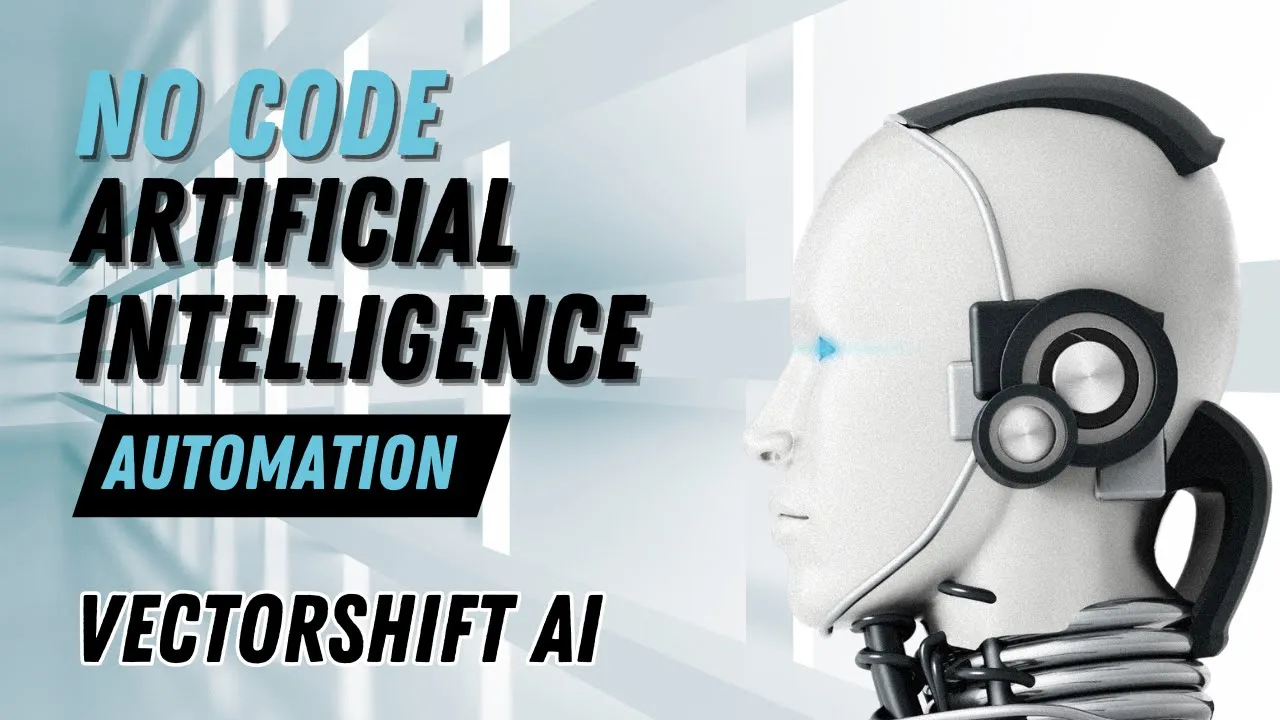Building a No-Code Chatbot with VectorShift AI | Step-by-Step Tutorial
Education

Introduction
Welcome back to another AI-focused article! In this piece, we'll explore VectorShift AI, a fantastic no-code automation platform designed to simplify the creation of AI applications. One of the standout features of VectorShift AI is its no-code functionality, which allows users to build and deploy applications using a straightforward drag-and-drop interface.
The Power of No-Code Functionality
With VectorShift AI, you can create sophisticated workflows effortlessly. Simply click on nodes, select the ones you need, and connect them—all without needing to write a single line of code. While the platform does cater to developers (Python coders, for instance) with an SDK, this tutorial aims to guide you through the no-code approach.
Before we dive into creating our chatbot, let's highlight some of the amazing capabilities found on the VectorShift AI website. They offer a range of integrations that connect seamlessly with various applications. These include major tools for large language models, Notion, Google Drive, and UPS. This integration capability also supports live data synchronization, making it incredibly user-friendly.
Getting Started
To kick things off, visit the VectorShift AI website (link provided in the description). If you already have an account, simply log in; if not, click on "Get Started." It's also beneficial to explore the 'Resources' tab, where you can find tutorials, documentation, blog posts, and even a Discord channel for community support. These resources can be invaluable when you're getting accustomed to the platform.
Once you're logged in, you'll land on the main screen. Here, you'll encounter several options in the left sidebar:
- Pipelines: The primary workspace for creating LLM workflows using various tools.
- Marketplace: A great feature that lets you import pre-built automations for popular applications like Gmail and Slack.
- Knowledge Base: Here, you can create and manage your own documents and resources.
- Automations: This is where you can set up triggers between different elements in your workflows.
Now, let’s proceed to create our chatbot.
Creating Your Chatbot
Once you’ve familiarized yourself with the interface, click on "Pipelines" and choose "Create New Pipeline." In this section, you can select pre-existing templates or build one from scratch. For our purposes, we’ll create a basic chatbot.
Step-by-Step Process:
Select Basic Chatbot: Click on "Basic" and choose to create a pipeline from scratch. The interface will load, presenting you with various options.
Set Up Input Node: Drag and drop the Input node onto your workspace. This node will allow users to enter their queries.
Add LLM Node: Next, from the LLM section, select the Open AI node and place it on the canvas near the Input node. We’ll configure this node shortly.
Connect Output Node: Lastly, add an Output node, positioning it to the right of the Open AI node. This node will display responses to the user.
Connecting Everything: Connect the Input node to the Open AI node and the Open AI node to the Output node. This straightforward drag-and-drop makes visualizing your logic easy.
Configuring the Chatbot
Click on the Input node to define it. Change "Field Name" to something relevant (e.g., "User Question"), set type as Text, and add brief instructions (e.g., "Answer user question, or if you can’t respond, state 'I do not know.'").
For the Open AI node, choose a model (e.g., "GPT-3.5-turbo"), input your API key if necessary, and link your query with the Input node's user question.
Ensure the Output node is set for displaying the result.
Running the Chatbot
After saving your changes, it’s time to test the chatbot. Click on the "Run" button and provide your query (e.g., “Why did the dog cross the road?”). Upon executing the pipeline, the bot should respond with a humorous answer—"To get to the other side!"
In just a matter of minutes, we’ve created a fully functioning chatbot using VectorShift AI's no-code platform.
Conclusion
VectorShift AI stands out for its simplicity and power, making it a favorable choice for both newcomers and experienced users. With the ability to create applications without coding, this platform unlocks potential for automation and AI-driven solutions. I hope you found this guide helpful!
For more information or to explore the features of VectorShift AI, check out the link provided below.
Keywords
- No-Code
- VectorShift AI
- Chatbot
- Automation
- LLM (Large Language Model)
- Drag-and-Drop
- Open AI
- User Query
FAQ
Q1: What is VectorShift AI?
A: VectorShift AI is a no-code automation platform that allows users to build applications effortlessly using a drag-and-drop interface.
Q2: Can I code in VectorShift AI?
A: Yes, while it's primarily a no-code platform, developers can use the SDK and connect through their preferred IDE.
Q3: What types of applications can I create?
A: You can create chatbots, workflow automations, and various integrations with existing tools and services.
Q4: How do I get started with VectorShift AI?
A: Visit the VectorShift AI website, create an account, and familiarize yourself with the resources available for guidance.
Q5: Is there support available if I get stuck?
A: Yes, VectorShift AI provides documentation, tutorials, and a community Discord channel for assistance.

